Hechen Yang
EMDS-6: Environmental Microorganism Image Dataset Sixth Version for Image Denoising, Segmentation, Feature Extraction, Classification and Detection Methods Evaluation
Dec 14, 2021
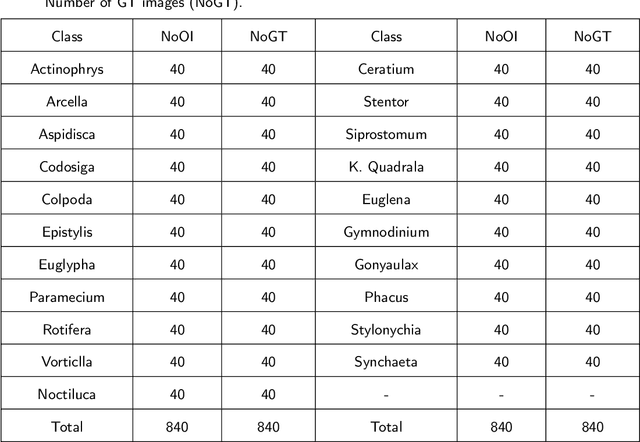

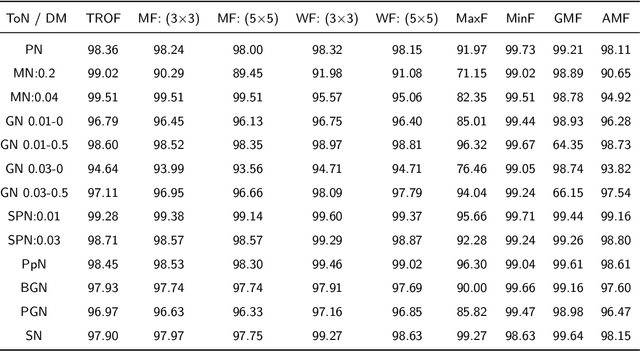
Abstract:Environmental microorganisms (EMs) are ubiquitous around us and have an important impact on the survival and development of human society. However, the high standards and strict requirements for the preparation of environmental microorganism (EM) data have led to the insufficient of existing related databases, not to mention the databases with GT images. This problem seriously affects the progress of related experiments. Therefore, This study develops the Environmental Microorganism Dataset Sixth Version (EMDS-6), which contains 21 types of EMs. Each type of EM contains 40 original and 40 GT images, in total 1680 EM images. In this study, in order to test the effectiveness of EMDS-6. We choose the classic algorithms of image processing methods such as image denoising, image segmentation and target detection. The experimental result shows that EMDS-6 can be used to evaluate the performance of image denoising, image segmentation, image feature extraction, image classification, and object detection methods.
EMDS-7: Environmental Microorganism Image Dataset Seventh Version for Multiple Object Detection Evaluation
Oct 28, 2021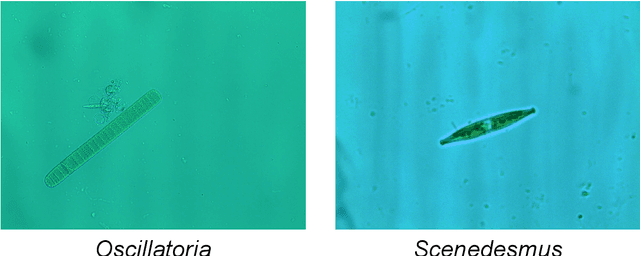
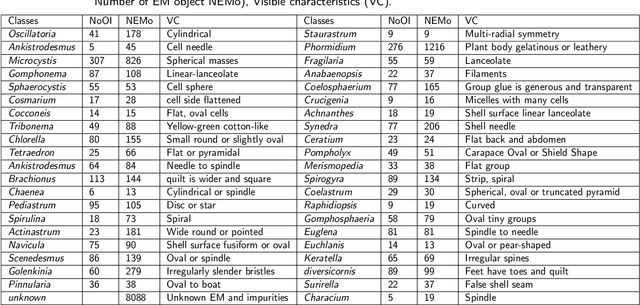
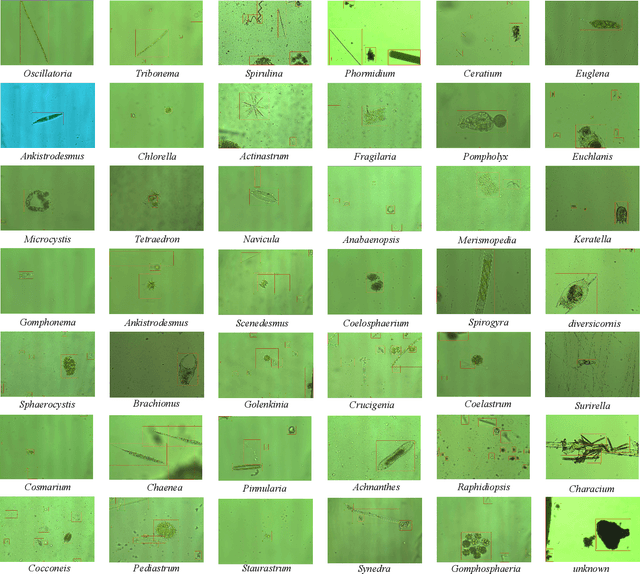
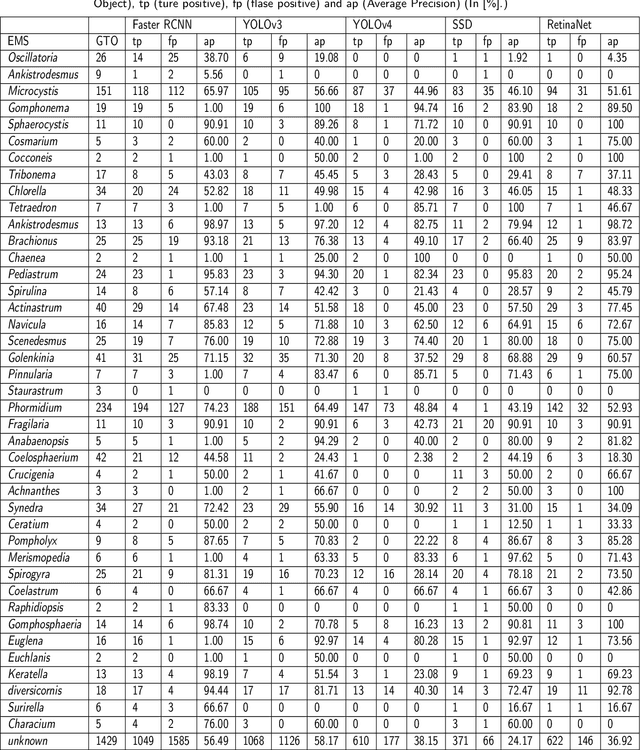
Abstract:The Environmental Microorganism Image Dataset Seventh Version (EMDS-7) is a microscopic image data set, including the original Environmental Microorganism images (EMs) and the corresponding object labeling files in ".XML" format file. The EMDS-7 data set consists of 41 types of EMs, which has a total of 2365 images and 13216 labeled objects. The EMDS-7 database mainly focuses on the object detection. In order to prove the effectiveness of EMDS-7, we select the most commonly used deep learning methods (Faster-RCNN, YOLOv3, YOLOv4, SSD and RetinaNet) and evaluation indices for testing and evaluation. EMDS-7 is freely published for non-commercial purpose at: https://figshare.com/articles/dataset/EMDS-7_DataSet/16869571
A Comparison of Deep Learning Classification Methods on Small-scale Image Data set: from Convolutional Neural Networks to Visual Transformers
Jul 22, 2021



Abstract:In recent years, deep learning has made brilliant achievements in image classification. However, image classification of small datasets is still not obtained good research results. This article first briefly explains the application and characteristics of convolutional neural networks and visual transformers. Meanwhile, the influence of small data set on classification and the solution are introduced. Then a series of experiments are carried out on the small datasets by using various models, and the problems of some models in the experiments are discussed. Through the comparison of experimental results, the recommended deep learning model is given according to the model application environment. Finally, we give directions for future work.
A Comparison for Patch-level Classification of Deep Learning Methods on Transparent Environmental Microorganism Images: from Convolutional Neural Networks to Visual Transformers
Jul 21, 2021
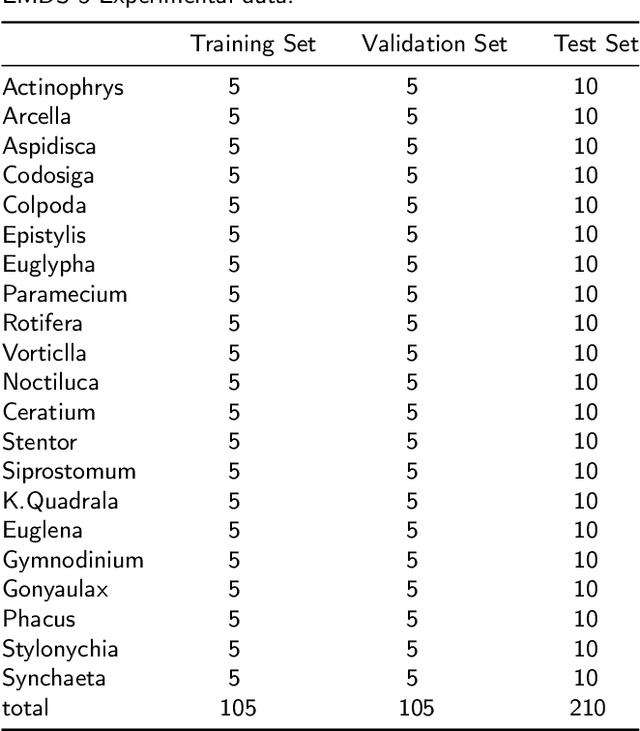


Abstract:Nowadays, analysis of Transparent Environmental Microorganism Images (T-EM images) in the field of computer vision has gradually become a new and interesting spot. This paper compares different deep learning classification performance for the problem that T-EM images are challenging to analyze. We crop the T-EM images into 8 * 8 and 224 * 224 pixel patches in the same proportion and then divide the two different pixel patches into foreground and background according to ground truth. We also use four convolutional neural networks and a novel ViT network model to compare the foreground and background classification experiments. We conclude that ViT performs the worst in classifying 8 * 8 pixel patches, but it outperforms most convolutional neural networks in classifying 224 * 224 pixel patches.
A Comparison for Anti-noise Robustness of Deep Learning Classification Methods on a Tiny Object Image Dataset: from Convolutional Neural Network to Visual Transformer and Performer
Jun 09, 2021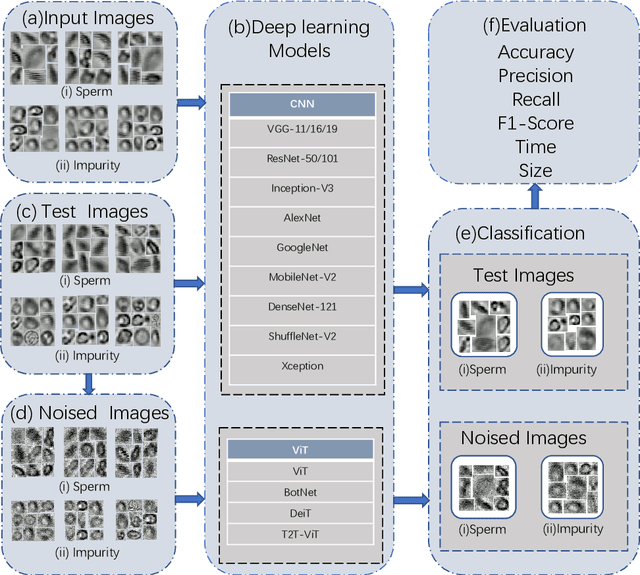
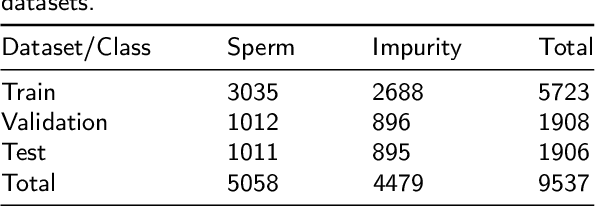
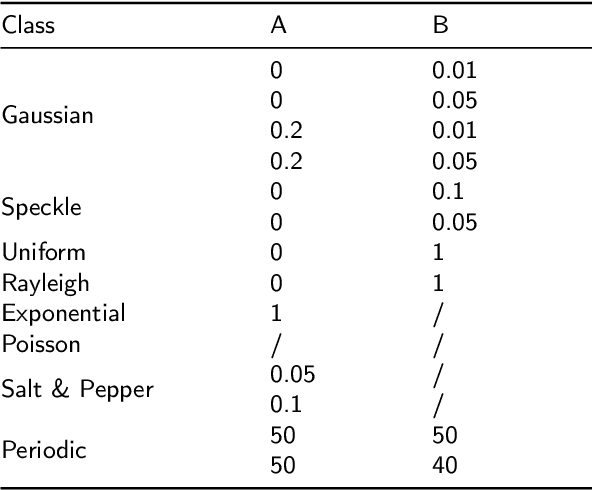
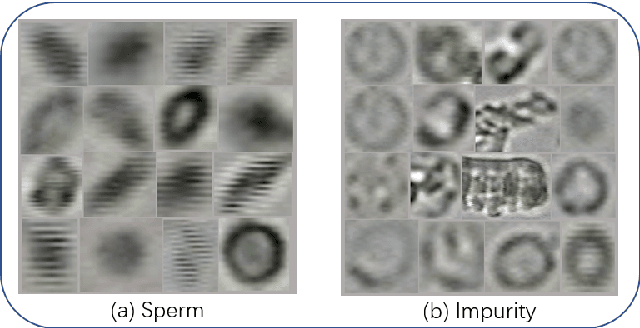
Abstract:Image classification has achieved unprecedented advance with the the rapid development of deep learning. However, the classification of tiny object images is still not well investigated. In this paper, we first briefly review the development of Convolutional Neural Network and Visual Transformer in deep learning, and introduce the sources and development of conventional noises and adversarial attacks. Then we use various models of Convolutional Neural Network and Visual Transformer to conduct a series of experiments on the image dataset of tiny objects (sperms and impurities), and compare various evaluation metrics in the experimental results to obtain a model with stable performance. Finally, we discuss the problems in the classification of tiny objects and make a prospect for the classification of tiny objects in the future.
 Add to Chrome
Add to Chrome Add to Firefox
Add to Firefox Add to Edge
Add to Edge